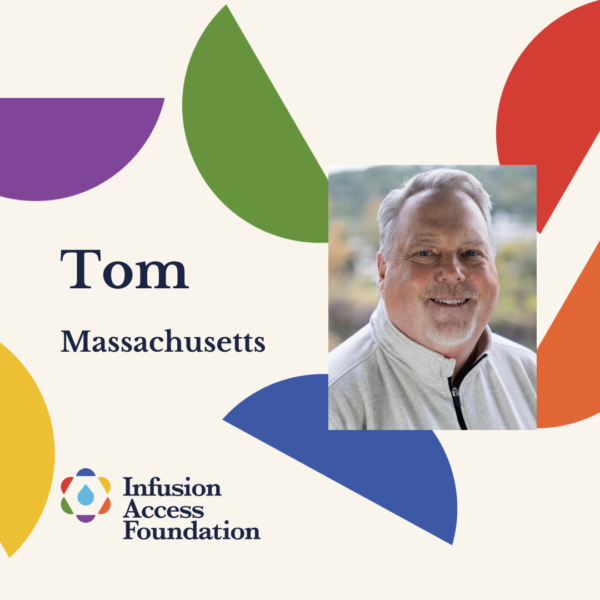Before being diagnosed in 2019, I was very active. I still played tennis at a very high level and had attended a couple of USTA national championships a few years prior. I was still playing baseball and going to national tournaments in Arizona and Las Vegas. I had played for over 20 years before. And I was an avid golfer. These are the things that I truly enjoyed doing. I can no longer do them today. I was also the head of global commercial sales for a life science consulting firm. The work we performed helped pharmaceutical and research institutions accelerate outcomes, reducing the time required to deliver a new therapy by sometimes years. I loved that job because the results of our efforts helped people and improved their quality of life.
That was very rewarding to work with such amazingly dedicated scientists who could see things I wasn’t able to. In my past, I have worked for companies such as Apple, Dell, and Harvard. Today, I am focused on using my background in science and technology to help patients understand the actual effectiveness of a new and novel therapy as they live their lives after the clinical trials are over. This is an exciting area for patients, as well as pharma and research institutes.
From a Tennis Court to a Turning Point
I was diagnosed on August 13, 2019. I had played in a tennis tournament the last weekend of July and realized something wasn’t right. I was annoyed rather than worried. I had a business trip the following Monday in New York City. I traveled to New York City, and on that Tuesday morning, when I looked in the mirror, my right eye was displaced, and my right eyelid was halfway down, covering my eye. After calling my primary care provider (PCP), I arranged an appointment for that Thursday. I still needed to attend my work appointments! I didn’t think much of it. After an MRI, CT scan, and many blood tests, it was revealed that I had tested as MG AChR ab positive. The rest is history. I had no idea what myasthenia gravis (MG) was or how devastating it would be to my life. I do recognize how fortunate I was that my PCP knew to test for MG as one of the blood tests. I could have been sent home with a misdiagnosis or no diagnosis. Then, I would have waited years to find out, as many of my MG friends did.
The day I was diagnosed, I didn’t know it was going to be as significant as it has become. The day I told my boss, CEO and neuroscientist, that I was diagnosed with MG. He said, “I’m really sorry, Tom”. That statement hit me as hard as any I have ever heard. I was worried about my daughter’s wedding and the lead-up to it, not knowing how my MG would affect me during the day. Was I going to be able to walk?, Walk her down the aisle? Would I be able to dance with her during the father-daughter dance? These were all rambling through my mind the entire time before the wedding.
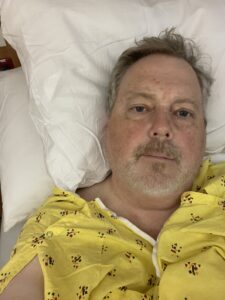
The Long Road to Treatment
When I was diagnosed, step therapy was in play. I needed to go through an established protocol of therapies to see how they would work on me, specifically me. MG is an awful disease in many ways, but one of the cruelest is how step therapy impacts us. We need to exhaust all other older therapies before we can be approved for the FDA-approved therapies for MG. As for me, I had to go two years before I could be placed on IV therapy for MG. Insurance dictates what therapies we are allowed to receive. Many other patients wait much longer because their state has not passed the Safe Step Act.
My new infusion was helpful. It was better than the combination of IVIG, along with several other medications. However, it wasn’t perfect. I still suffered every day. The infusion was delivered by IV every 14 days. After about ten days, it began to lose its effectiveness. I would severely crash. My symptoms were impacting my vision (double vision) and eyelids. I struggled with drooping facial expressions, chewing, breathing, swallowing, and my legs were severely impacted. That affected my walking, my arms, and my balance. My sleep was also impacted. Though I have tried several new medications, they do not cure MG. I still live at about 70% of my former self.
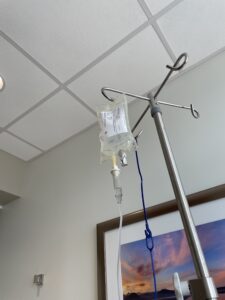
How Step Therapy, Insurance Barriers, and Advocacy Organizations Shape Life with MG
I have private insurance, which I pay for since I am no longer working full-time. I’m one of the lucky ones. Although I have had some hiccups, my insurance situation is relatively stable. I have heard many stories about how insurance is a nightmare. Patients experience many denials. I know of a gentleman in Florida who was denied his infusion therapy after being on it for 18 months. He had nowhere to turn. We were both unaware of Infusion Access Foundation.
Insurance companies are very good at following procedures. It’s not a staff issue. They are doing their job. I have found that, in nearly every case, I am in a loop. I keep going in circles where I am told to speak to someone I have already talked to, who had passed me on to someone else. They did not offer any resources. You must understand how the system works.
When dealing with any company or institution, persistence is key. You need to be nice and consistently follow up. Be a bulldog and don’t let go. Utilize all of your contacts. It’s not easy, but keep persisting. “Let’s Talk MG” is a program where an MG patient can speak with another MG patient who is trained. It’s one of the best and most fulfilling programs there is for MG patients. The MGFA is an excellent organization for validating content and materials. They also host an annual conference for MG patients and caregivers. It is a conference where patients have the opportunity to speak with representatives from research and pharmaceutical companies about their new and existing therapies. We can also meet other MG patients and share our stories.
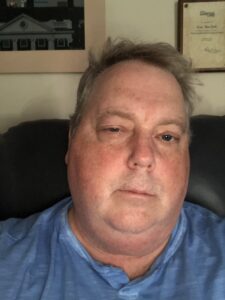
The Mental Toll of a ‘Managed’ Disease
Mental health is a topic that needs more attention. I once told a friend after being diagnosed, “The old Tom was dead.” She got angry with me. I understood why she was angry, but that’s the way I felt with this insidious disease. I was never going to be able to do the things I took for granted. It weighs on you every day, even on the better days.
I wish others truly understood how difficult living with MG can be. As patients, we’re in tune to how people react when other diseases are mentioned: amyotrophic lateral sclerosis (ALS), Parkinson’s disease, Huntington’s disease, and rightly so. They are all terrible diseases. MG’s impact on an individual’s life is very similar. There is a difference between how research characterizes MG from an analytical perspective and how a person with MG lives with the condition in real life. The idea that researchers express that MG can be managed is scientifically accurate, but it’s in a vacuum. In real life, what they call a “managed” life is very difficult for us.
MG is cruel and insidious. There is no rhythm or cadence to it. At any given moment, I may need to take a break or, worse, completely disconnect and isolate myself to recover from that moment. That may take a couple of hours. I needed to learn about my body and how to live a life with the disease. I had to learn how to understand my boundaries and limitations and then apply them so I wouldn’t do anything dangerous. It’s challenging to stick to my limitations sometimes!
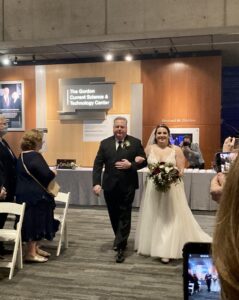
The People Who Keep Me Going
I have two children, Dave and Steffi. Dave is a gifted writer and has been published a couple of times. My daughter, Steffi, was married a couple of years ago while I was in the throes of myasthenia gravis (MG). Even though it was a challenge, it was one of the best days of my life to be able to walk her down the aisle! A memory I will never forget.
Besides my children, my brothers and sisters have been immense to me, both in terms of emotional support and physical support when I am unable to do something. I have a few close friends who are also there for me. They check in on me with simple text messages. One friend sends me a message every day to check in and see how I’m doing. I told him it was his way of telling me he loves me, and how important that message was to me.
I want to continue spreading the word about MG and the Infusion Access Foundation so that others can find the support they need.
A diagnosis can change your body, but it shouldn’t take away your ability to show up for life’s most significant moments. From walking his daughter down the aisle to finding strength in daily check-ins, Tom’s story reminds us what access to care means. At the Infusion Access Foundation, we’re committed to breaking down the barriers that keep patients like Tom from living fully. No one should have to navigate a maze of red tape to hold onto their health and their hope. Tom Bartlett wrote this story. The Infusion Access Foundation team edited this story.






